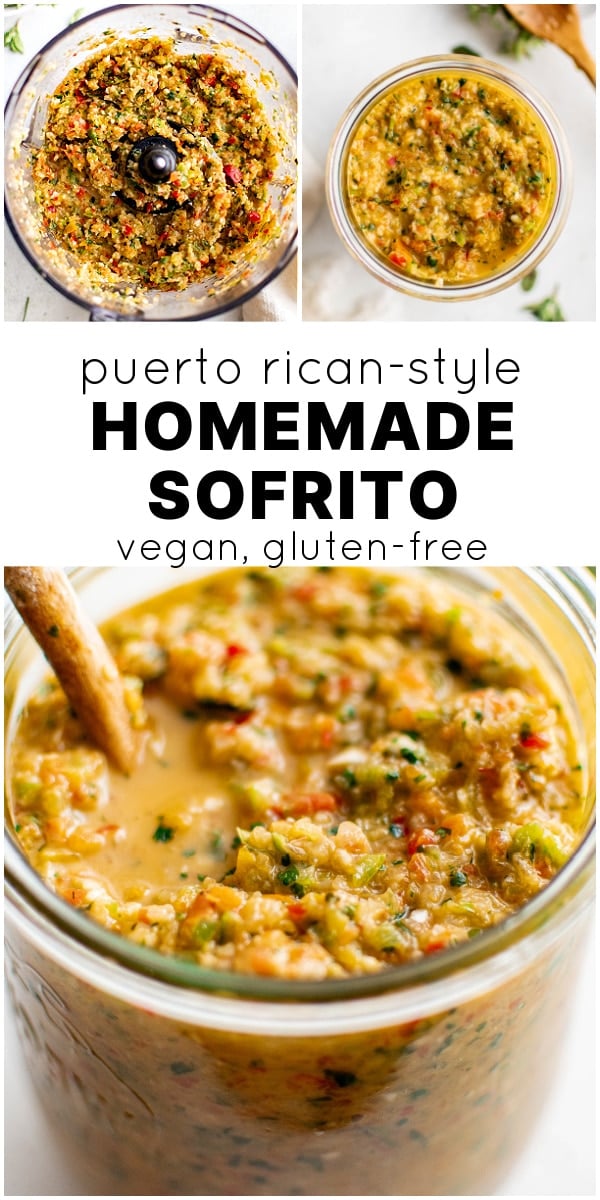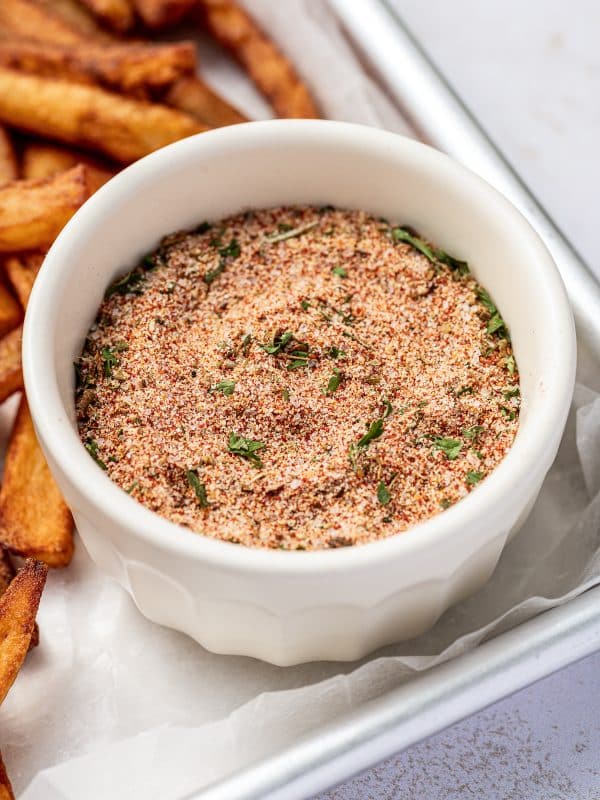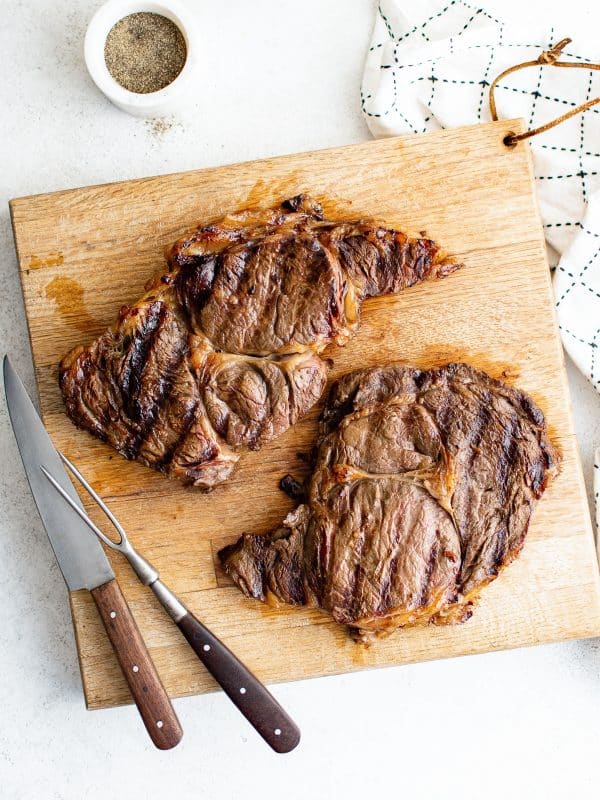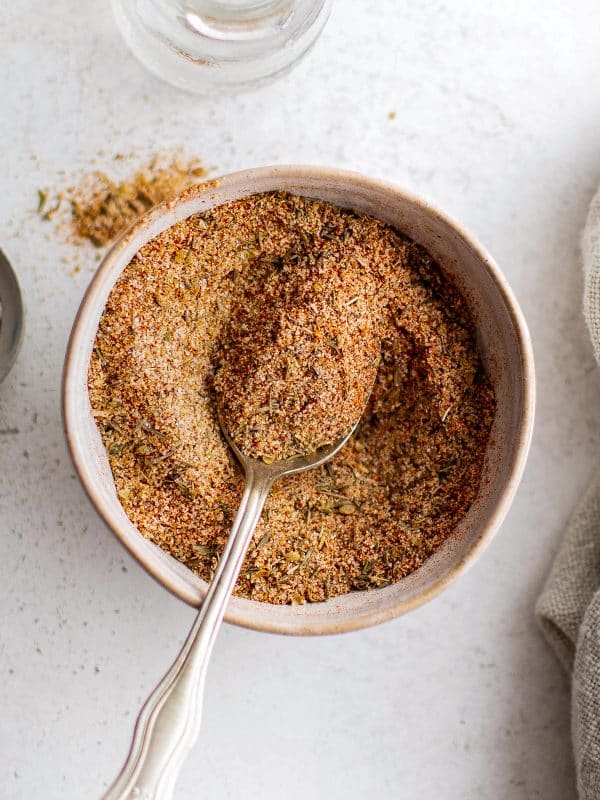This post may contain affiliate links. See my disclosure policy.
This Sofrito Recipe is an aromatic blend of sweet peppers, onions, garlic, and fresh herbs, and must-have flavor base for countless Latin and Caribbean dishes. It’s super easy to make and uses ingredients you can find in most grocery stores.
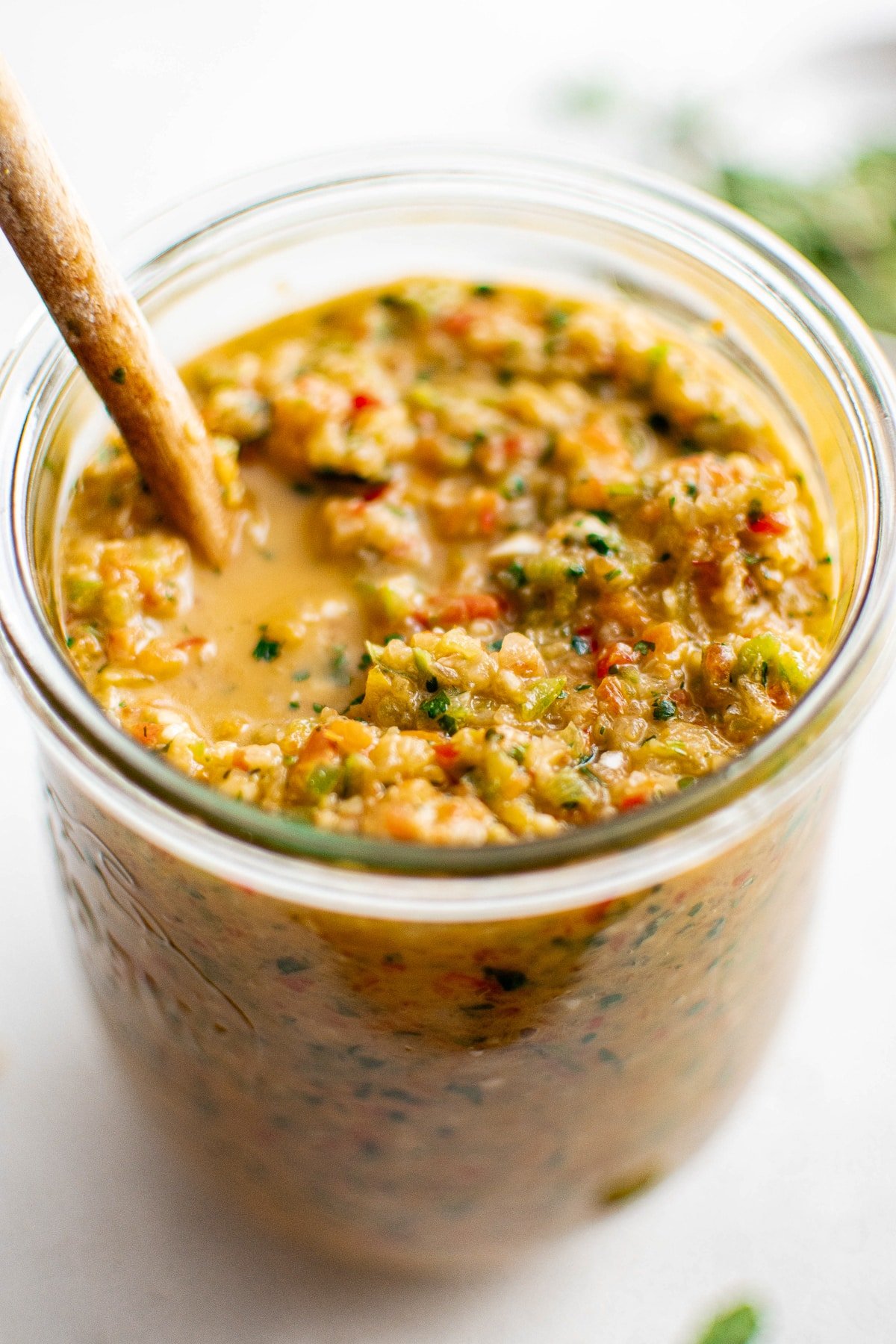
About This Recipe
Sofrito is a bold, flavor-packed blend of aromatic ingredients like peppers, onions, garlic, and fresh herbs—think of it as the Latin American version of mirepoix or the Cajun holy trinity. Used as a base in countless Puerto Rican, Dominican, and Cuban recipes, sofrito is incredibly easy to make at home: just toss everything into a food processor or blender and let it do the work (or go the traditional route and chop it all by hand). In this post, I’ll show you how to make Puerto Rican-style sofrito using fresh, accessible ingredients—with a few tips for substitutions and freezing, too.
Table of Contents
Sofrito Ingredients + Substitutions
Authentic Puerto Rican sofrito is traditionally made with culantro (recao) and cubanelle peppers (ají dulce)—two ingredients that give sofrito its signature depth and flavor. Culantro, not to be confused with cilantro, has long, serrated leaves and a much more intense, earthy flavor. Ají dulce, a small, sweet chili pepper with little to no heat, adds a mild fruitiness and distinct aroma that’s essential to the dish. These are typically combined with onion, garlic, green bell pepper, and sometimes additional herbs like oregano or parsley, then blended or finely chopped to form a thick, uncooked seasoning base.
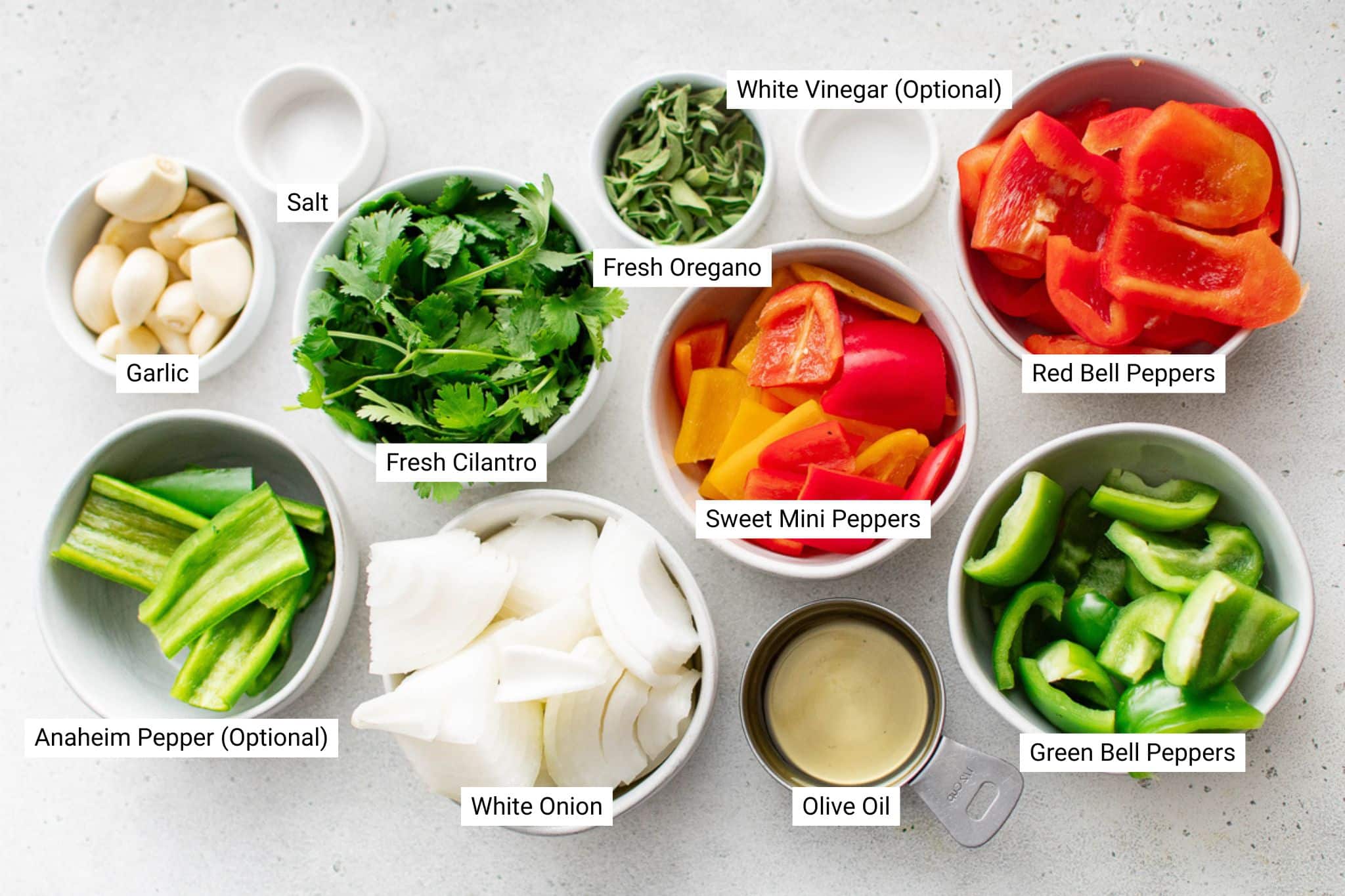
In this simplified version, I use sweet mini peppers in place of ají dulce and cilantro in place of culantro. These two ingredients are readily available at most grocery stores, yet manage to capture the original flavor of traditional sofrito. I also included a mild Anaheim pepper to add body without heat, though it can be left out if preferred.
TL;DR If you do have access to culantro and ají dulce, use them! These two ingredients are what give Puerto Rican sofrito its unmistakable flavor. Avoid spicy peppers like jalapeños or serrano—sofrito is meant to be savory and aromatic, not spicy.
Variations
Sofrito varies enormously based on region, culture, and even individual households. In the Dominican Republic, sofrito (called Sazón) typically includes ingredients like tomato sauce or vinegar for added acidity. Meanwhile, in Cuba and Spain, tomatoes are a staple, and even wine is sometimes added. In these versions, the ingredients are slowly sautéed to allow the flavors to develop. Portuguese sofrito, called Refogado, is the same, except the ingredients are typically very simple – just onion, garlic, and olive oil.
How to Make Puerto Rican Sofrito Step-By-Step Photos
You can also find the full printable recipe in the recipe card below.
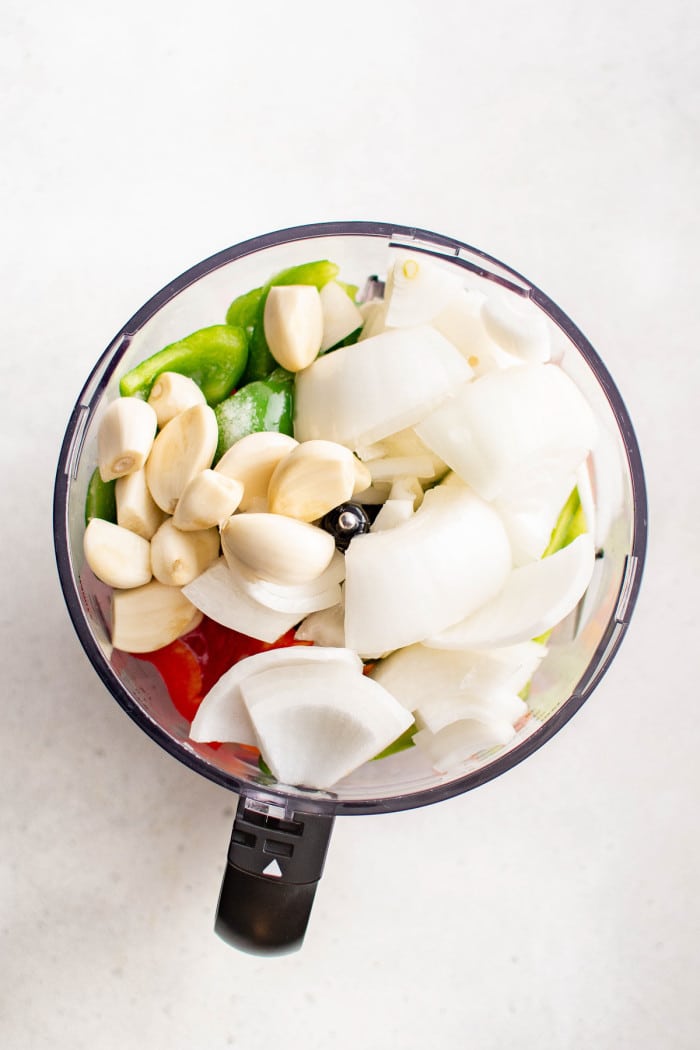
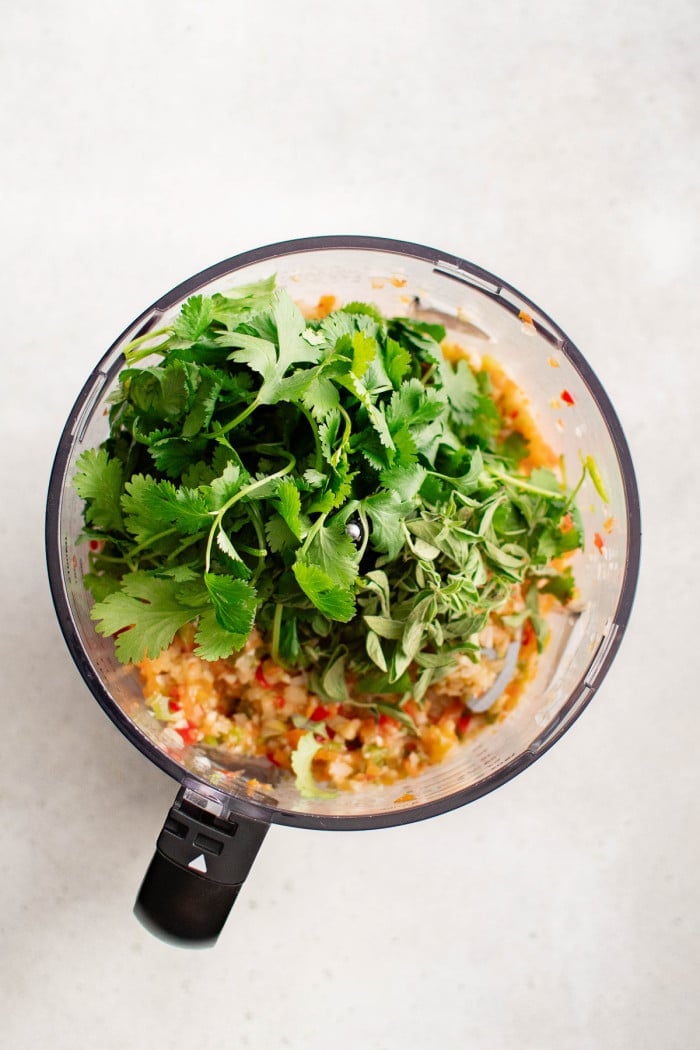
Step 1: Start by adding the bulkier aromatics to your food processor. This includes the sweet mini peppers, red and green bell peppers, Anaheim pepper (if using), garlic cloves, and chopped white onion. Also add the oil, white vinegar (optional), and salt.
Step 2: Secure the lid and pulse the ingredients until they are finely chopped but not yet fully blended. You’re aiming for a rough, chunky base. Next, remove the lid and add your fresh cilantro and oregano (or culantro, if available).
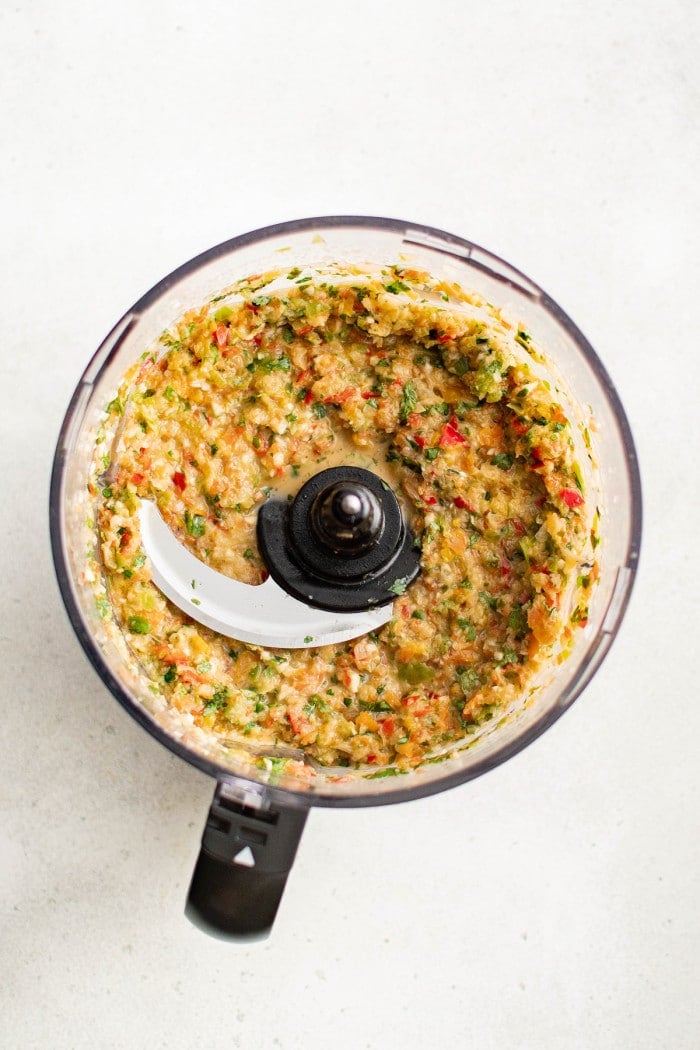
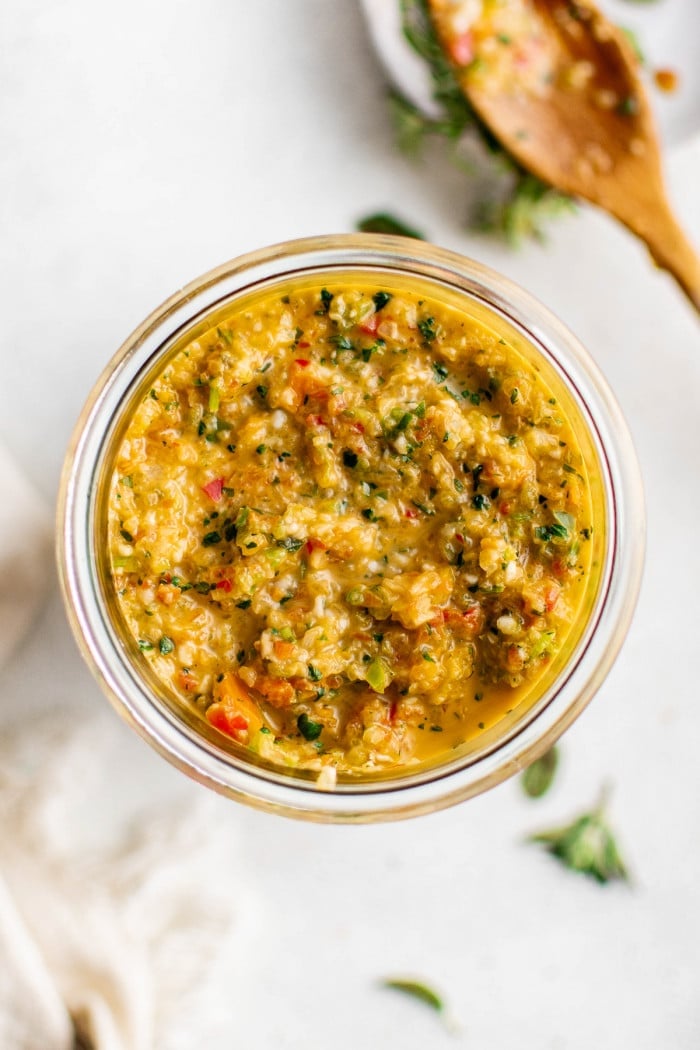
Step 3: Continue processing until the mixture reaches a thick, scoopable consistency – not too chunky, not too smooth. You want a uniform blend with a bit of texture. Tip: If the mixture is too thick or struggling to blend, you can drizzle in a bit more olive oil, one tablespoon at a time.
Step 4: Stop and scrape down the sides of the bowl to ensure everything is evenly incorporated. The texture should be moist and speckled with tiny bits of herbs and peppers. Then, use a spoon or rubber spatula to transfer the finished sofrito to a jar or storage container.
Color variation in sofrito. The color of sofrito will range from bright green to slightly orange, depending on the combination of ingredients used. Traditional sofrito, which includes mostly green ingredients (culantro, green bell pepper, and ají dulce) tends to be a deep green. In this recipe, substitutions like sweet mini peppers with red bell pepper, have created a more golden hue. Ultimately, the final color will depend on the types and amounts of herbs and peppers you use. Each batch may look slightly different.

How to Use Sofrito?
You’ll use sofrito in the same way you would garlic and onions. So, for example, in the beginning of a recipe, start by sautéeing 1–2 tablespoons of your homemade sofrito (fresh or frozen) in a little oil until the flavors have had a chance to “bloom,” aka release their aroma and deepen in flavor. Next, use it as a rich and flavorful base in whatever recipe you plan to cook up next.
I’ve used sofrito in dishes like Pollo Guisado (Puerto Rican Chicken Stew) and this Slow Cooker Picadillo Pot Roast, but you’ll most likely find me adding a scoop (or cube) to various rice recipes, soup recipes, bean dishes, and even scrambled into eggs for an extra boost of flavor. Make a trip to Puerto Rico and you’re guaranteed to find it in traditional dishes like arroz con gandules (rice with pigeon peas), habichuelas guisadas (stewed beans), and carne guisada (beef stew).
Looking for more ways to add Latin American flavor to everyday dishes? Try making my All-Purpose Adobo Seasoning Recipe or this bold and colorful Sazón Seasoning Recipe. Easy and so delicious!
Storage and Freezing Tips
Store sofrito in an airtight container in the refrigerator for up to 2 weeks. For longer storage, you can freeze it for up to 3 months. The best way to freeze sofrito is to portion it into ice cube trays or silicone molds (ideally 1-2 tablespoons each). One frozen, transfer the cubes to a large zip-lock bag or container and grab a cube or two as needed.
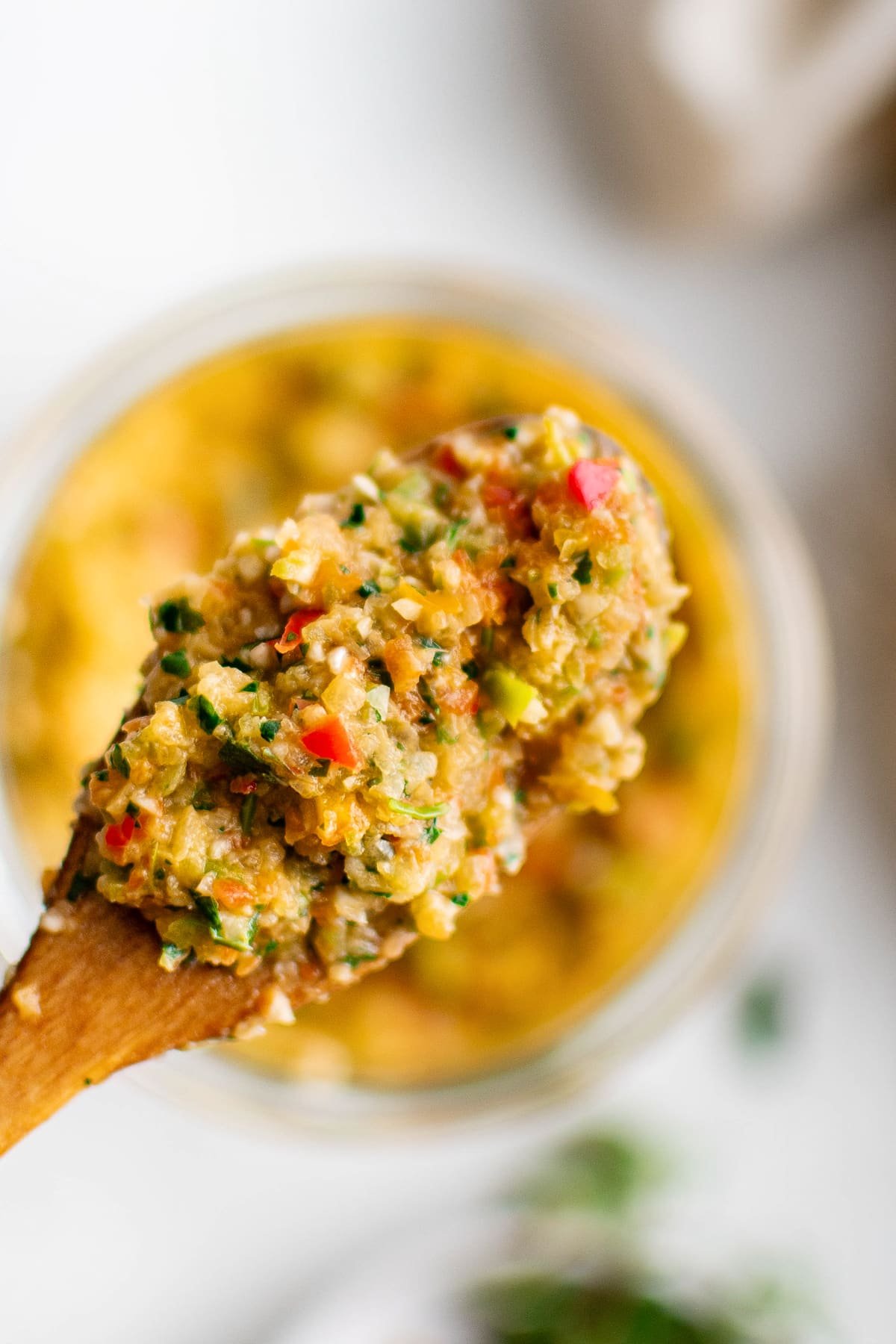
A Note on Authenticity
This isn’t a historically authentic recipe. My goal here at The Forked Spoon is to create and share recipes accessible to everyone, that way home cooks of all levels can enjoy and recreate these beloved flavors in their own kitchens. While I always aim to honor the original dish, sometimes I will adapt ingredients to reflect what’s available in most grocery stores.

Puerto Rican Sofrito Recipe
Ingredients
- 6 sweet peppers, deseeded and cut into pieces
- 1 head garlic, peeled with the cloves left whole
- 1 red bell pepper, deseeded and cut into large chunks
- 1 green bell pepper, deseeded and cut into large chunks
- 1 Anaheim pepper, deseeded and cut into large chunks, optional
- 1 large white onion, peeled and cut into large chunks
- ¼ cup olive oil
- 1 tablespoon white vinegar, optional
- 1 teaspoon salt
- 1 large bunch cilantro, with the thicker stems removed
- 2 tablespoon fresh oregano leaves, packed
Instructions
- Add the sweet peppers, garlic, red and green pepper, Anaheim pepper, onion, oil, vinegar, and salt to the bowl of a food processor or blender. Pulse until the ingredients are roughly chopped.
- Add the cilantro and oregano (or culantro, if available). Process/pulse again until it reaches a thick and even consistency. You may need to stop, remove the lid, and scrape down the sides of the bowl 1-2 times, to ensure everything is evenly incorporated.
- Use as needed, or transfer the sofrito to mason jars or ice cube trays to freeze for later use.
Notes
- If you have access to culantro, us it in place of regular cilantro.
- If you have access to ají dulce, use it in place of the mini sweet peppers.
- The white vinegar is optional. It is not authentic to Puerto Rican sofrito, but a small amount can help preserve freshness if you’re refrigerating instead of freezing.
- Please read more about the ingredients in this recipe, as well as a note about its authenticity in the full post.
- Sofrito is savory and aromatic, not spicy.
- Dried herbs will not work as a substitute in this recipe.
- Refrigerator storage: Up to 2 weeks in an airtight container.
- Freezer storage: Up to 3 months. Check out the full post for more tips.
Nutrition
Nutrition information is automatically calculated, so should only be used as an approximation.
